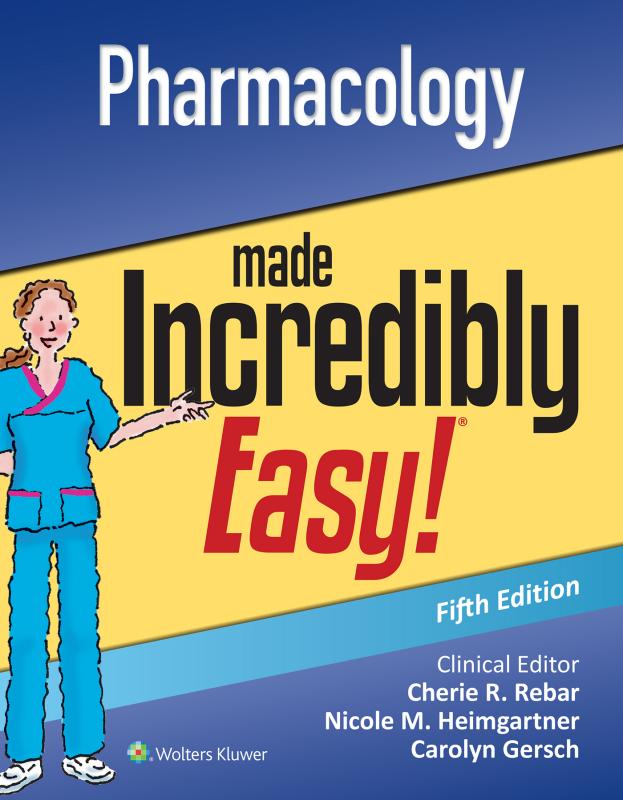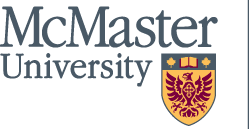
Pharmacology Made Incredibly Easy
$87.95
Author: Lippincott
Publisher: Login Canada
Format: Paperback
Available: 2
Ready to master the medication process? Tap into the go-to resource for nursing pharmacology basics, with the fully updated new fifth edition ofPharmacologyMade Incredibly Easy!®.
Offering clear, concise descriptions of crucial nursing pharmacology concepts and procedures, this easy-to-follow, colorfully illustrated guide offers step-by-step guidance so to can grasp the fundamentals in enjoyableIncredibly Easystyle. From initial assessment to safe medication administration and patient care plans, this is the perfect supplement to class materials, offering solid preparation for NCLEX®, as well as a handy refresher for experienced nurses.
Learn the ins and outs of nursing pharmacology care, withthelatest data and protocols:NEWchapters on patient education, sensory drugs, and dermatologic drugsNEWchapter on medication safety, including abbreviations to avoid and a review of dosage calculationsNEWcontent on current approved medications, and dosages, and expected versus adverse effectsNEWcontent on emergency drugs, herbs/supplements, immunization schedule, and moreHundreds of colorful diagrams, drawings, and chartsthat illustrate core concepts, with easy-to-retain definitions and clear direction on administering drugs; drug distribution, absorption, and metabolism; drug classes and their uses; and potential drug interactionsQuick-scan outline format offersup-to-date guidance on areas including:Nursing pharmacology fundamentalsConcepts of pharmacokinetics, pharmacodynamics, and pharmacotherapeuticsPain drugs, autonomic nervous system drugs, neurologic and neuromuscular drugsPsychotherapeutic, anti-infective, anti-inflammatory, anti-allergy, and immunosuppressant drugsAntineoplastic drugs, drugs for fluid and electrolyte balanceWays a drug may affect patients of different ages and other warningsContentreflects theNCSBN Clinical Judgment Measurement Model- guidance from initial assessment to evaluating outcomes“Practice Makes Perfectend-of-book practice exam- approximately 100 new NCLEX®-style questions, to increase your exam confidenceChapter features include:Prototype pro- Actions, indications, and nursing considerations for common prototype drugsA three-step processis provided throughout the chapters to help you care for individuals taking commonly prescribed medicationsPharm function- Explains and illustrates how drugs act in the body, and addresses how to recognize and treat adverse reactionsBefore you give that drug- Warnings to consider before you administer a drugEducation edge- Information to share with your patientBlack Box Warningsboxes draw attention to life-threatening concernsLifespan Lightbulbboxes highlight information about how a drug or drug class may affect patients of different agesQuick quiz- End-of-chapter questions with answers/explanations, to help you remember the essentialsNurse Joy and Jakeillustrated characters offer tips and insights throughout
About the Clinical Editors
Cherie R. Rebar, PhD, MBA, RN, CNE, CNECI, COI, FAADN, is a Professor of Nursing at Wittenberg University in Springfield, Ohio
Nicole Heimgartner, DNP, MSN, RN, CNE, CNECI, COI, is a Nursing Faculty member at Galen College of Nursing in Louisville, Kentucky
Carolyn Gersch, PhD, MSN, RN, CNE, is a Professor of Practice in the Nursing Program at Wittenberg University in Springfield, Ohio
Offering clear, concise descriptions of crucial nursing pharmacology concepts and procedures, this easy-to-follow, colorfully illustrated guide offers step-by-step guidance so to can grasp the fundamentals in enjoyableIncredibly Easystyle. From initial assessment to safe medication administration and patient care plans, this is the perfect supplement to class materials, offering solid preparation for NCLEX®, as well as a handy refresher for experienced nurses.
Learn the ins and outs of nursing pharmacology care, withthelatest data and protocols:NEWchapters on patient education, sensory drugs, and dermatologic drugsNEWchapter on medication safety, including abbreviations to avoid and a review of dosage calculationsNEWcontent on current approved medications, and dosages, and expected versus adverse effectsNEWcontent on emergency drugs, herbs/supplements, immunization schedule, and moreHundreds of colorful diagrams, drawings, and chartsthat illustrate core concepts, with easy-to-retain definitions and clear direction on administering drugs; drug distribution, absorption, and metabolism; drug classes and their uses; and potential drug interactionsQuick-scan outline format offersup-to-date guidance on areas including:Nursing pharmacology fundamentalsConcepts of pharmacokinetics, pharmacodynamics, and pharmacotherapeuticsPain drugs, autonomic nervous system drugs, neurologic and neuromuscular drugsPsychotherapeutic, anti-infective, anti-inflammatory, anti-allergy, and immunosuppressant drugsAntineoplastic drugs, drugs for fluid and electrolyte balanceWays a drug may affect patients of different ages and other warningsContentreflects theNCSBN Clinical Judgment Measurement Model- guidance from initial assessment to evaluating outcomes“Practice Makes Perfectend-of-book practice exam- approximately 100 new NCLEX®-style questions, to increase your exam confidenceChapter features include:Prototype pro- Actions, indications, and nursing considerations for common prototype drugsA three-step processis provided throughout the chapters to help you care for individuals taking commonly prescribed medicationsPharm function- Explains and illustrates how drugs act in the body, and addresses how to recognize and treat adverse reactionsBefore you give that drug- Warnings to consider before you administer a drugEducation edge- Information to share with your patientBlack Box Warningsboxes draw attention to life-threatening concernsLifespan Lightbulbboxes highlight information about how a drug or drug class may affect patients of different agesQuick quiz- End-of-chapter questions with answers/explanations, to help you remember the essentialsNurse Joy and Jakeillustrated characters offer tips and insights throughout
About the Clinical Editors
Cherie R. Rebar, PhD, MBA, RN, CNE, CNECI, COI, FAADN, is a Professor of Nursing at Wittenberg University in Springfield, Ohio
Nicole Heimgartner, DNP, MSN, RN, CNE, CNECI, COI, is a Nursing Faculty member at Galen College of Nursing in Louisville, Kentucky
Carolyn Gersch, PhD, MSN, RN, CNE, is a Professor of Practice in the Nursing Program at Wittenberg University in Springfield, Ohio


